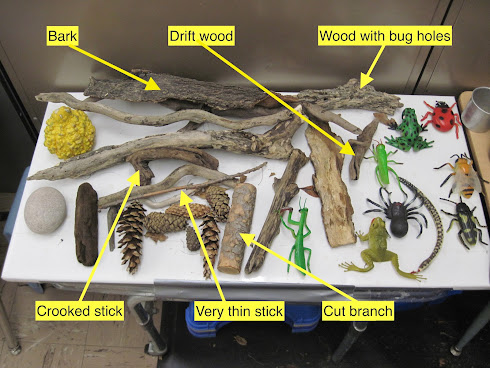A couple weeks ago, I wrote a post singing the praises of offering rocks for children's play and exploration at the sensory table. You can find the link here. Now let me sing the praises of offering sticks for children's play and exploration at the sensory table.
For me, the term sticks was a very broad category. It included such things as bark, driftwood and sticks of various sizes, shapes, lengths and texture.
Once I knew the children in my room and trusted them to use sticks more constructively than not, I introduced long sticks that I had collected on one of river walks along the Mississippi River.
These children decided to build "bridges" across the width of the table. They then created a game in which they would place a bug on one of the sticks and then shake the stick so the bug would drop into the table. (Believe it or not, there was absolutely no sword fighting with these sticks!)
I did say I had a broad definition of sticks. In fact some of the sticks I offered the children were branches.
This child decided to take out all the branches from the sensory table and stack them on the floor. I really felt like he was "working." In any case, it fulfilled a need to transport coupled with the physical challenge of moving large pieces of wood.
If you want to read more about how I introduced sticks in the classroom and how the children made sense of those natural elements, check out this post and this post.
I knew that sticks were important for children. Any time I would take a walk with children or my grandchildren, they would inevitably pick up sticks. Since they were important for children, I made a point of bringing them inside creating a context in which the children found constructive ways to use them.






